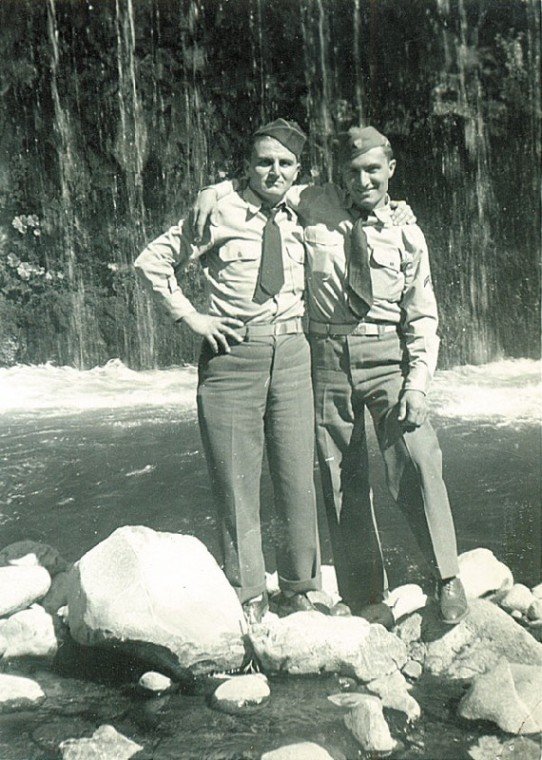World War II veterans Ray and Terry Cadei will lead Gilroy’s
Memorial Day Parade
Gilroy – The Cadei brothers have spent a lifetime side by side. They grew up in Gilroy and lived in the city for much of the last 90 years. They both joined the National Guard in their late 20s and landed on the same war-torn Pacific Islands during World War II.
In one week, Raymond and Terso “Terry” Cadei, now 91 and 90 years old, will drive past hundreds of flag-waving residents at the head of the city’s Memorial Day Parade, which honors the men and women of the military who have died in battle.
The brothers did not expect to be named grand marshals of the parade.
“I think it’s a nice thing. I was surprised when the city council picked me out and called him out,” Raymond said, motioning to his younger brother.
As they sit in Raymond’s kitchen off Rosanna Street, the brothers bicker occasionally before settling on the sequence of events that led them into the thick of war. They led parallel lives in those days, hopping from island to island in the Pacific theater.
Terry joined the National Guard in 1939 and Raymond signed up in 1940. Both were eventually called up to serve in 1941 in the Army’s Company B, 154th Infantry, 7th Division. For the next four years, Raymond worked as a jeep driver who transported military officers. Terry’s main job involved transporting munitions to and from the front lines.
Their roles in the infantry often landed them on different naval carriers and transport ships, but they inevitably ended up at the same island battle fronts – Kwajalein and Saipan in the Marshall Islands, Leyte in the Philippines, and Okinawa, Japan.
The Cadeis faced gunfire from the moment they stepped foot on Leyte, recalled Raymond, though Terry said he managed to get through four major campaigns without firing a single shot.
“And the one time on Okinawa I had to fire back, my damn gun jammed,” Terry said with a chuckle. When asked if they were scared, the brothers nodded in disbelief and laughed.
But for Terry, the fighting was not the worst of it.
“My worst job was picking up the dead,” he recalled. “I picked up maybe 50 dead people. Friends, people from other companies. You can’t forget that, when you see a guy you know with a rifle embedded in him. That’s the worst job I ever had.”
Before and after the war, the brothers spent most of their lives in Gilroy. Their parents moved them from the Midwest during the prohibition era in the 1920s.
“Our father was a miner and bootlegger in Iowa,” Terry said. “When he moved to California, he worked as a farmer and a bootlegger. Our mother worked at the cannery.”
So did their sons, who worked “just about any job there is,” Terry said. He eventually settled on a career as a painter, while his brother worked as a welder.
Raymond met his wife Isabel just before shipping out for the war. She waited 26 months for him, until he arrived in San Francisco in July 1945, discharged a month earlier than his brother due to an ailment.
“My wife, when she seen me, she just grabbed a hold of me. … ” he said, smiling as he hugged his own shoulders. “She was just so glad to see me. … She was a wonderful woman.”
Isabel and Raymond had five children over 62 years of marriage, and he now is a grandfather three times over. Terry also has several children and a step-son, and is awaiting his first great-granddaughter.
Though the brothers live just a few blocks from each other, they lead separate lives. Raymond is involved with the American Legion and Lion’s Club. Terry is not involved in any social groups, but he stays true to one of his lifelong passions.
“He’s quite a dancer you know,” Raymond said.
“I still dance,” Terry chimed in. “I was quite well known for my dancing. I do ballroom, a little bit of the jitterbug. I go to Santa Cruz and San Jose. Wherever there’s a dance, I’ll go.”













